Abstract
The sporicidal activity of hospital disinfectants was tested using two methods of test and two species of spores. Alcoholic hypochlorite and glutaraldehyde (Cidex) showed some sporicidal activity; the first was the more effective. Iodophors, formalin, and phenolics were less effective, in descending order. Chlorhexidine showed no activity.
A freshly prepared solution containing 50% methanol and sufficient sodium hypochlorite to provide 2000 parts per million available chlorine in distilled water, with a contact time of 15 minutes, is suggested for the decontamination of clean, heat-sensitive instruments except those of plated metal. It must be understood that no such method can be depended upon to sterilize.
The instruments should be rinsed in sterile water before use after decontamination.
Full text
PDF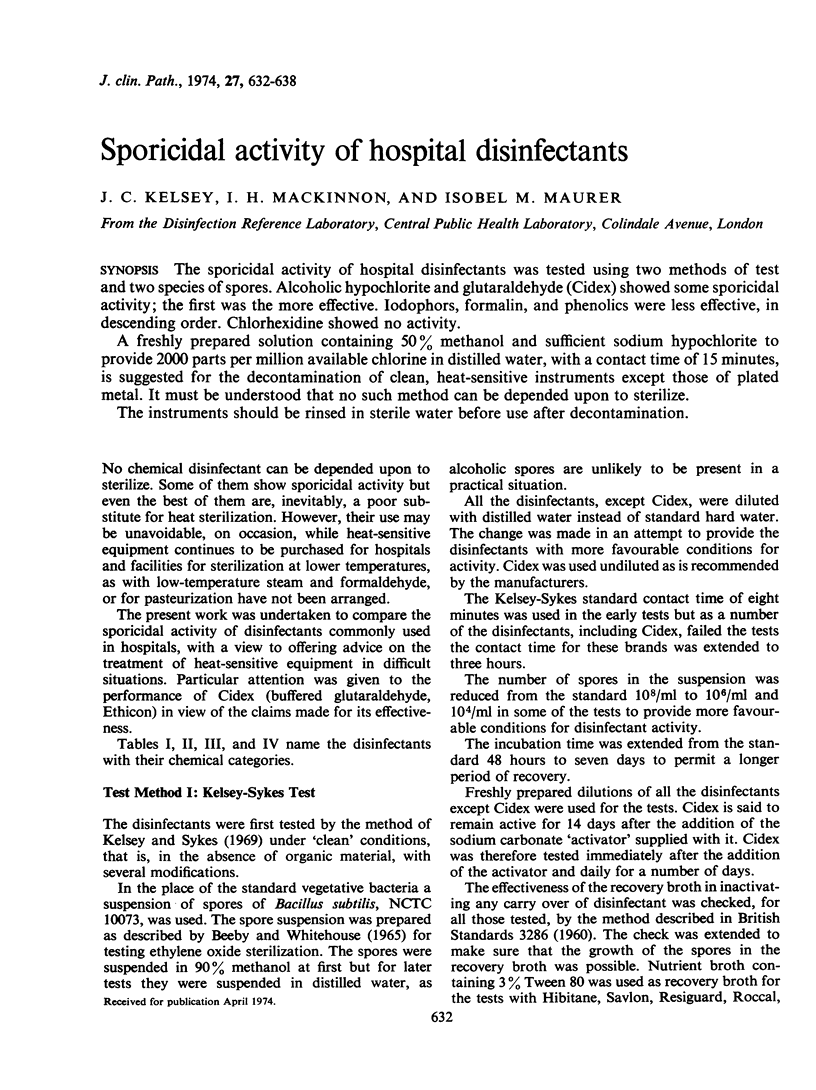
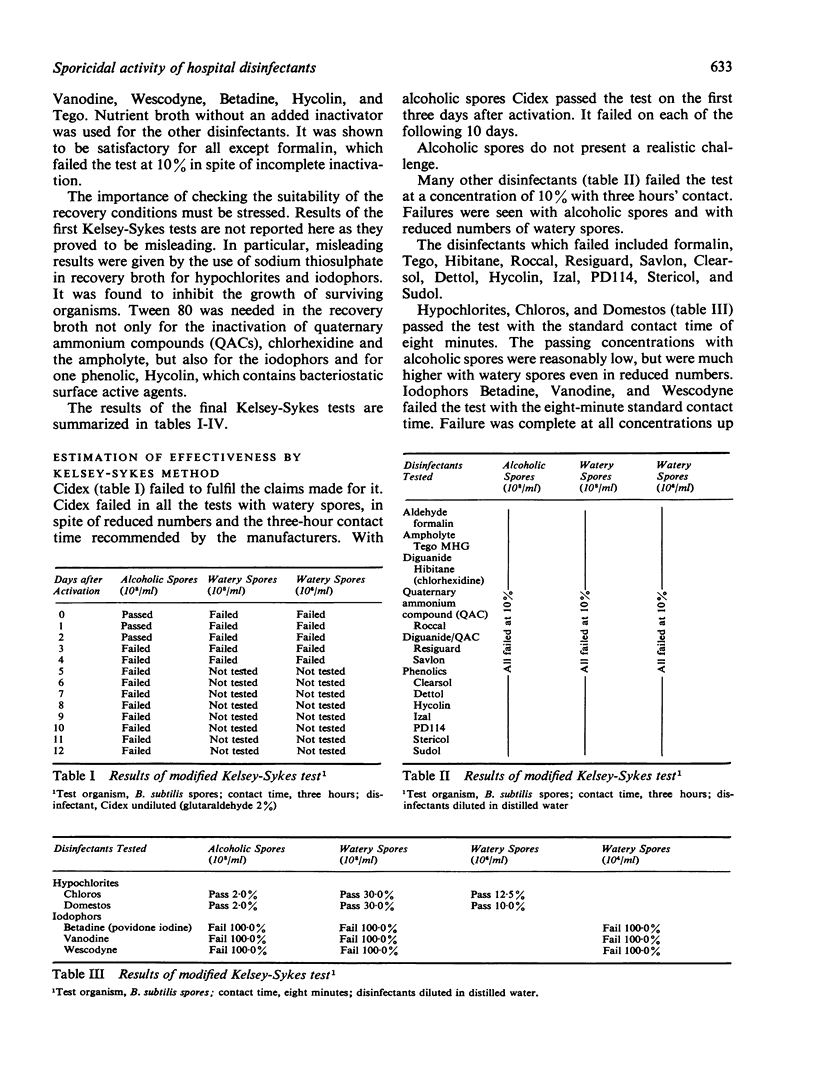
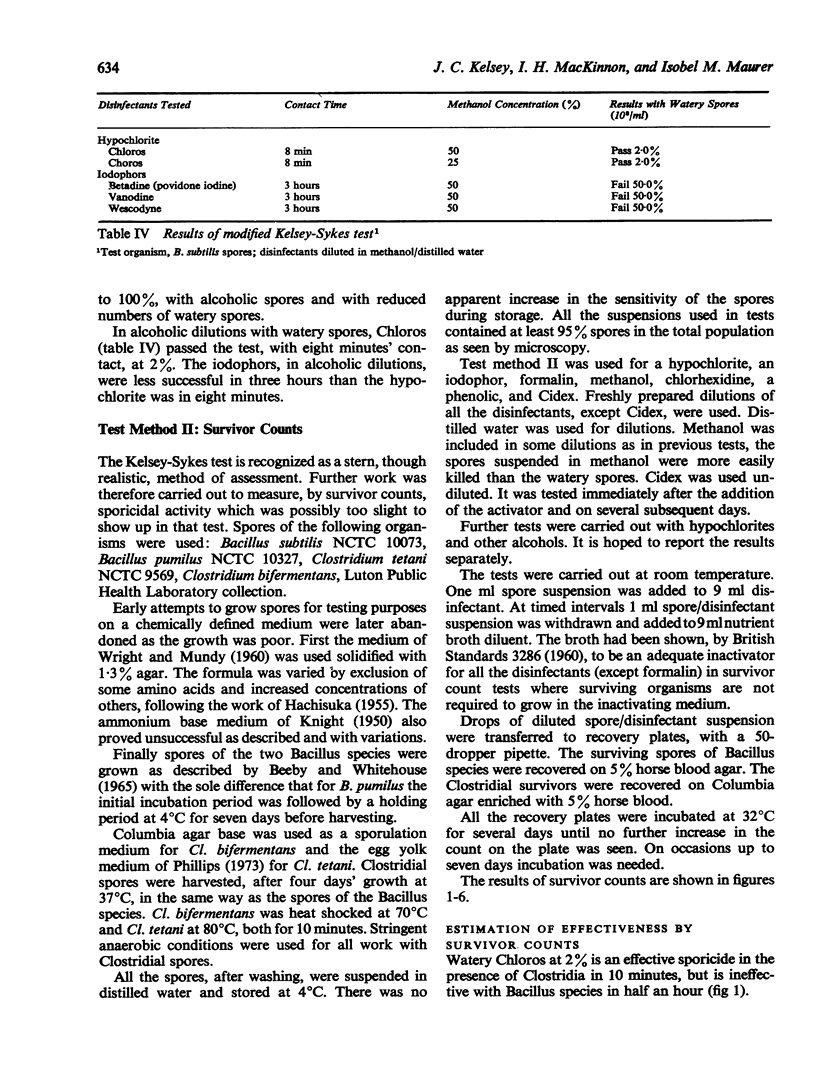
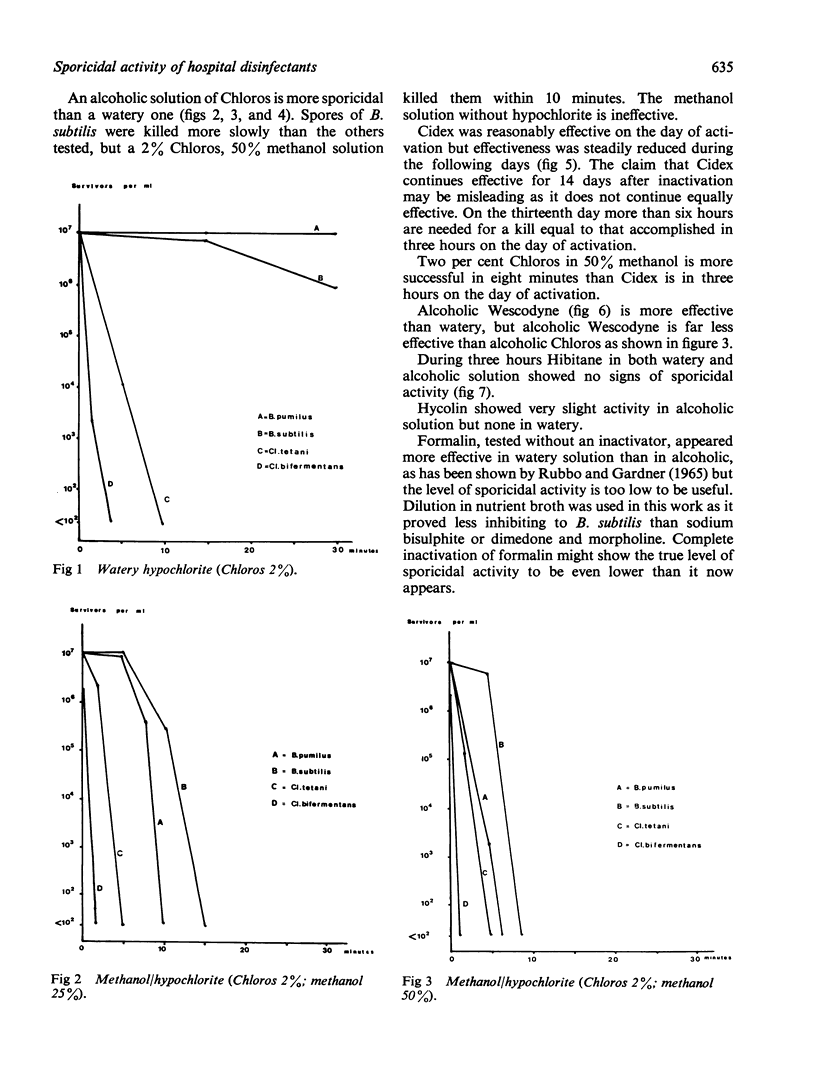
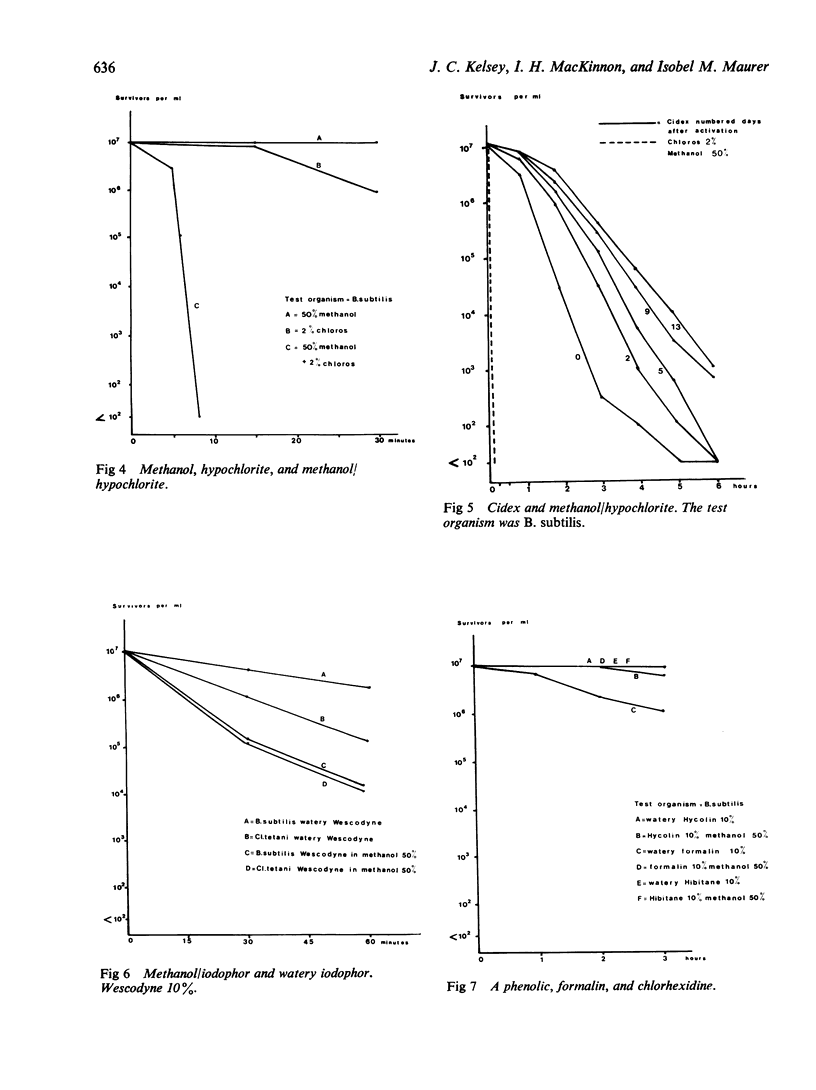
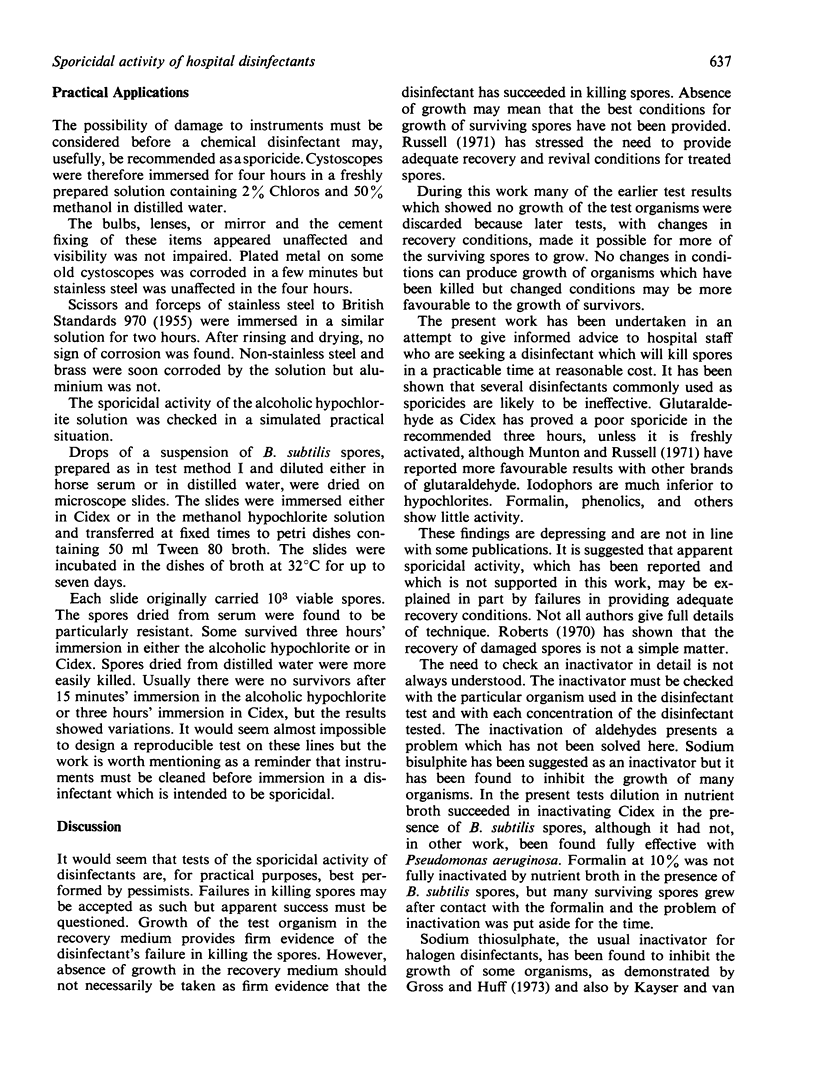
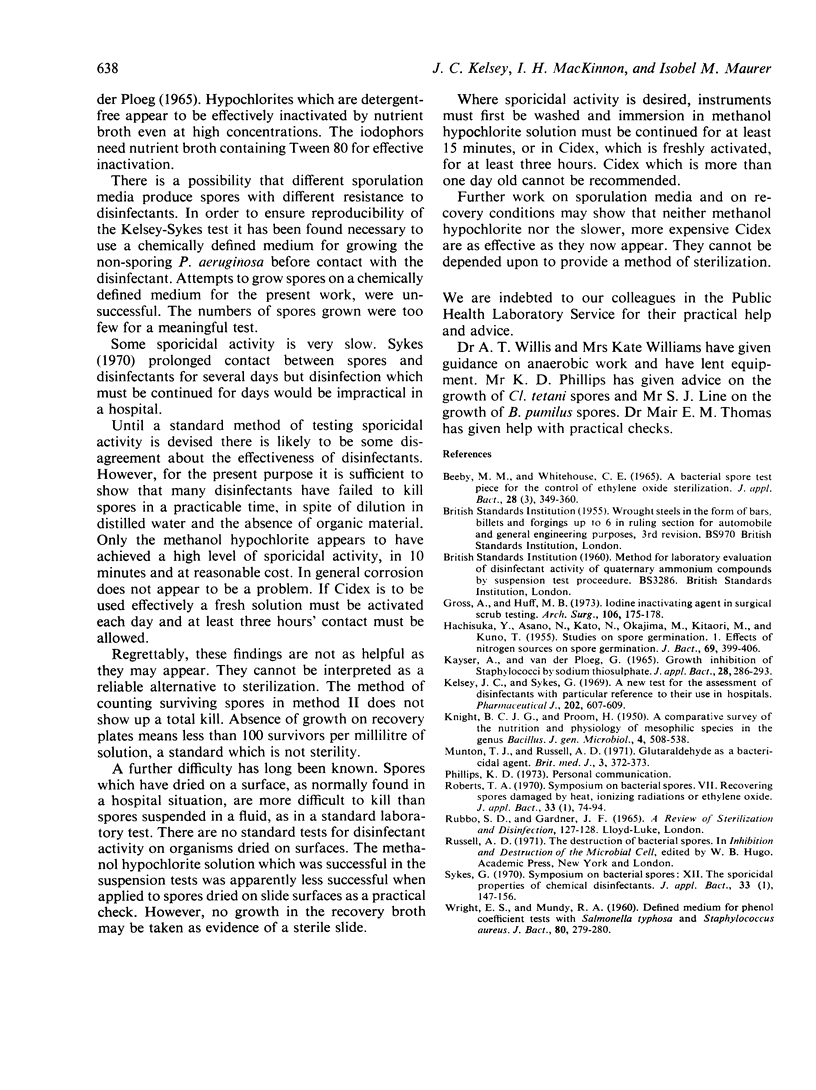
Selected References
These references are in PubMed. This may not be the complete list of references from this article.
- Beeby M. M., Whitehouse C. E. A bacterial spore test piece for the control of ethylene oxide sterilization. J Appl Bacteriol. 1965 Dec;28(3):349–360. doi: 10.1111/j.1365-2672.1965.tb02163.x. [DOI] [PubMed] [Google Scholar]
- Gross A., Cofone L., Huff M. B. Iodine inactivating agent in surgical scrub testing. Arch Surg. 1973 Feb;106(2):175–178. doi: 10.1001/archsurg.1973.01350140037012. [DOI] [PubMed] [Google Scholar]
- HACHISUKA Y., ASANO N., KATO N., OKAJIMA M., KITAORI M., KUNO T. Studies on spore germination. I. Effect of nitrogen sources on spore germination. J Bacteriol. 1955 Apr;69(4):399–406. doi: 10.1128/jb.69.4.399-406.1955. [DOI] [PMC free article] [PubMed] [Google Scholar]
- KNIGHT B. C. J. G., PROOM H. A comparative survey of the nutrition and physiology of mesophilic species in the genus Bacillus. J Gen Microbiol. 1950 Sep;4(3):508–538. doi: 10.1099/00221287-4-3-508. [DOI] [PubMed] [Google Scholar]
- Kayser A., van der Ploeg G. Growth inhibition of staphylococci by sodium thiosulphate. J Appl Bacteriol. 1965 Aug;28(2):286–293. doi: 10.1111/j.1365-2672.1965.tb02156.x. [DOI] [PubMed] [Google Scholar]
- Munton T. J., Russell A. D. Glutaraldehyde as a bactericidal agent. Br Med J. 1971 Aug 7;3(5770):372–373. doi: 10.1136/bmj.3.5770.372-b. [DOI] [PMC free article] [PubMed] [Google Scholar]
- Roberts T. A. Symposium on bacterial spores: VII. Recovering spores damaged by heat, ionizing radiations or ethylene oxide. J Appl Bacteriol. 1970 Mar;33(1):74–94. doi: 10.1111/j.1365-2672.1970.tb05235.x. [DOI] [PubMed] [Google Scholar]
- Sykes G. Symposium on bacterial spores: XII. The sporicidal properties of chemical disinfectants. J Appl Bacteriol. 1970 Mar;33(1):147–156. doi: 10.1111/j.1365-2672.1970.tb05240.x. [DOI] [PubMed] [Google Scholar]
- WRIGHT E. S., MUNDY R. A. Defined medium for phenol coefficient tests with Salmonella typhosa and Staphylococcus aureus. J Bacteriol. 1960 Aug;80:279–280. doi: 10.1128/jb.80.2.279-280.1960. [DOI] [PMC free article] [PubMed] [Google Scholar]


